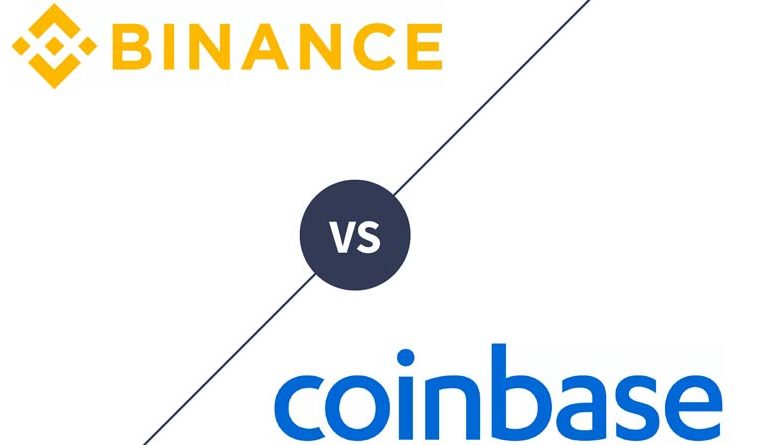
Which of the two most popular cryptocurrency exchanges, Binance or COIN base, should you choose? What you need, which crypto coins you want to trade, how much you’re ready to spend, and other factors all influence the response. Binance and Coinbase are two of the most popular cryptocurrency exchanges. Among established cryptocurrency exchanges, the United States and the United Kingdom are both prominent players. Binance will be mentioned in this post. As Binance, the American arm of the greater Binance corporation, We’ll compare it to Coinbase Pro, which has far lower fees than the normal Coinbase service, albeit we’ll just call it Coinbase.
Here’s how Binance and Coinbase stack up against one another in terms of some of the most critical metrics for traders.
Binance vs. Coinbase: How Much Does It Cost?
Trading costs are the most substantial cost you’ll likely incur, and if you do a lot of it, they can quickly add up. Fortunately, most exchanges will give you a discount based on your 30-day trading volume. Binance, on the other hand, goes one step further. Maker-taker pricing is used by both Coinbase and Binance, with fees based on whether you contribute liquidity to the market (makers) or remove liquidity from the market (takers). As a result, trading costs vary depending on both your volume and the sort of trade you execute.
Here’s how each exchange’s fees are calculated:
Binance trading fees
| 30-DAY VOLUME | MAKER | TAKER |
|---|---|---|
| Less than $50,000 | 0.10 percent | 0.10 percent |
| $50,000 – $100,000 | 0.09 percent | 0.09 percent |
| $100,000 – $500,000 | 0.08 percent | 0.09 percent |
| $500,000 – $1 million | 0.07 percent | 0.08 percent |
| $1 million – $5 million | 0.05 percent | 0.07 percent |
| $5 million – $10 million | 0.04 percent | 0.06 percent |
| $10 million – $25 million | 0 percent | 0.06 percent |
| $25 million – $100 million | 0 percent | 0.05 percent |
| $100 million – $250 million | 0 percent | 0.04 percent |
| $250 million – $500 million | 0 percent | 0.03 percent |
| $500 million and up | 0 percent | 0.02 percent |
Coinbase Pro trading fees
| 30-DAY VOLUME | MAKER | TAKER |
|---|---|---|
| Less than $10,000 | 0.50 percent | 0.50 percent |
| $10,000 – $50,000 | 0.35 percent | 0.35 percent |
| $50,000 – $100,000 | 0.15 percent | 0.25 percent |
| $100,000 – $1 million | 0.10 percent | 0.20 percent |
| $1 million – $10 million | 0.08 percent | 0.18 percent |
| $10 million – $20 million | 0.08 percent | 0.18 percent |
| $20 million – $50 million | 0.05 percent | 0.15 percent |
| $50 million – $100 million | 0.05 percent | 0.15 percent |
| $100 million – $300 million | 0.02 percent | 0.10 percent |
| $300 million – $500 million | 0 percent | 0.08 percent |
| $500 million – $750 million | 0 percent | 0.06 percent |
| $750 million – $1 billion | 0 percent | 0.05 percent |
| $1 billion – $2 billion | 0 percent | 0.04 percent |
| $2 billion and up | 0 percent | 0.04 percent |
Binance Trading Commissions

The results are clear: whether you’re doing modest or high volume, Binance costs less than Coinbase all the way up and down the scale. Furthermore, if you pay for trading fees with BNB, Binance’s own in-house coin, will reduce your fees by another 25%. Consider the following scenario: you’ve made $25,000 in trades in the previous 30 days and want to make another $10,000 trade. As a maker or taker at Coinbase, you’d pay 0.35 percent for a total of $35. In comparison, at Binance, you’d pay 0.10 percent, or $10, for that trade. If you pay using BNB, Binance will reduce the charge by 25%, bringing the total to just $7.50. This pricing advantage is maintained all the way up the volume chart. With $500,000 in volume, for example, you’d pay a maker/taker charge of 0.10 or 0.20 percent on the following deal at Coinbase, compared to 0.07 or 0.08 percent at Binance (0.0525 percent and 0.06 percent with the discount).
When you trade more than $100 million in 30-day volume, Binance offers 0% maker pricing for incremental trades (0.06 percent for takers).On Coinbase, you still pay 0.08 percent on incremental trades as a maker (compared to 0.18 percent for takers).Then there’s that Binance discount, which widens the gap even further.
Binance has a clear advantage in what is likely to be the most significant set of ongoing costs you will face.Every step of the way, Coinbase falls behind on this metric.
Coinbase vs. Binance: Cryptocurrencies Accepted
In terms of the total number of types of coins offered by each exchange, the stats appear to favour Coinbase. Traders can choose from 158 coins on Coinbase, compared to 70 on Binance, which is fewer than half as many as its competitor.
But, like a buffet, if you don’t want to exchange a specific coin, it doesn’t matter if it’s available or not. So, how do these exchanges stack up against the top ten cryptocurrencies in terms of market capitalization? A comparison there might reveal some distinctions. On that criteria, Binance outperforms Coinbase by offering eight of the top ten coins versus Coinbase’s seven. Of course, both offer Bitcoin; the main difference is that Binance also sells BNB, the coin that powers the Binance ecosystem.
Staking rewards on Binance vs. Coinbase
When it comes to the staking rewards offered on their platforms, Coinbase and Binance are very close. Staking rewards are a way for crypto owners to earn money for supporting the token during the verification process. In most cases, an exchange simply deposits your earnings into your account, net of any expenses. Binance does not charge a commission on your rewards, whereas Coinbase does. Staking is available on Coinbase for six different coins, including Ethereum, one of the most popular, as well as Algorand and Cosmos. Staking is available on Binance for seven coins, including Algorand and Cosmos. If you want to stake your Ethereum holdings, you might prefer Coinbase. What about the size of such rewards? Based on the most recent data, Coinbase expects that Cosmos and Algorand will earn 5% and 4%, respectively. Binance, on the other hand, estimates such rates to be 1.5 per cent to 3 per cent and 4.5 per cent to 6.5 per cent. So, when it comes to coins that both sites share, Coinbase takes one and Binance takes the other.
Advantage: In terms of staking incentives, Coinbase beats Binance, especially for individuals who own Ethereum and want to stake it. However, for people who have coins that are supported on one platform but not the other, a particular exchange may be preferable.
Fees for deposits and withdrawals on Binance vs. Coinbase
For ACH deposits in US dollars, neither Coinbase nor Binance charge deposit or withdrawal fees. Binance performs slightly better in terms of wire transfers, with no fee for wire deposits and a $15 withdrawal fee for domestic wires. Coinbase, on the other hand, charges $10 for wire deposits and $25 for wire withdrawals. Advantage: Binance has a more favourable pricing structure, both for ACH and wiring fees. Binance, on the other hand, is definitely the better option if you expect to use wires regularly.
Customer service: Binance vs. Coinbase
Despite the growing popularity of crypto exchanges, customer assistance appears to be primarily an afterthought. Coinbase, on the other hand, has lately expanded its efforts in this area, adding phone help to its previous options, which solely included email and a support ticket. In addition, if you see any questionable activity, you can contact customer service to have your account locked (though this raises the question of why this feature is needed when traditional stockbrokers seem to have no such issues.)
In conclusion

Binance wins on what is perhaps the single most essential element of an exchange—cost. Because of its low trading expenses, Binance has been voted the best crypto exchange for beginners by Bankrate.
Coinbase, on the other hand, wins entirely or has a minor advantage in the finer parameters, such as accessible currencies. When comparing Coinbase and Binance, the ultimate victor may be the exchange that best suits your needs, whether it’s reduced trading costs, a larger selection, or better customer service.



